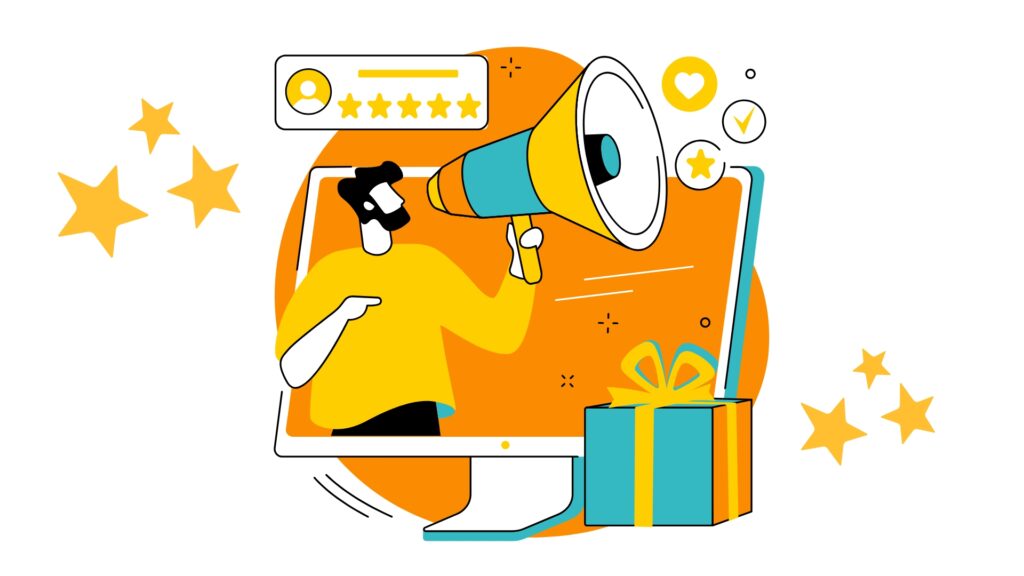The business case for connecting solutions to our customer journeys
Why happy customers are your best brand ambassadors
In a rapidly evolving marketplace where competition is intense, what’s the secret sauce for businesses aiming for profitable growth?
It’s connecting the solutions to the customer journey and improving your customer experience. Here is why: Customer-centricity is a business strategy that drives significant returns and fosters lasting relationships. Customer satisfaction is not just about meeting expectations, it’s about exceeding them in a way that fosters trust and loyalty.
Studies by Bain & Company reveal that customers who rate their experience highly are four times more likely to recommend a brand.
Furthermore, research from Nielsen indicates that 92% of consumers trust recommendations from friends and family over traditional advertising.
Investing in customer happiness is not just about retention, it’s about creating a marketing force that works for your brand.

The power of well-managed solution portfolios
Companies that strategically align their solutions with their customer journeys are more likely to see sustained success.
According to McKinsey & Company, businesses with well-structured solution portfolios grow revenue 15% faster than those without clear customer alignment. By offering products and services that seamlessly support customers at different journey stages, businesses increase engagement, reduce churn, and enhance brand loyalty.

Customer-centric solutions drive profitability
Another study found that customer-centric companies are 60% more profitable than those that do not prioritize customer needs.

Aligning solutions with customer journeys ensures that businesses address pain points proactively, improving satisfaction and driving repeat purchases. Well-managed portfolios tailored to customer needs also reduce acquisition costs, as satisfied customers naturally bring in new customers through word-of-mouth.
Acquiring new customers can be 5-25 times more expensive than retaining existing ones, according to various studies. This is because acquiring new customers typically involves high marketing costs such as advertising, promotions, and sales efforts. In contrast, existing customers have already gone through the acquisition phase and retaining them often requires fewer resources.
The loyalty effect
A 2014 study from Harvard Business Review; The Loyalty Effect: The Hidden Force Behind Growth, Profits, and Lasting Value highlights that increasing customer retention rates by just 5% can increase profits by 25% to 95%. This happens because loyal customers tend to spend more over time, refer others, and are less sensitive to price changes.
The “Customer Lifetime Value” (CLV) metric is crucial here. It calculates the total revenue a business can expect from a customer over the duration of their relationship. Loyal customers, who stay longer and engage with the brand more frequently, increase the overall CLV significantly. A 2016 report from Bain & Company found that customers who had an emotional connection with a brand had a lifetime value that was 306% higher than those who were merely satisfied.
Loyal customers are less likely to churn or switch to a competitor, which is another factor that increases profitability. They develop a stronger connection with the brand and are more likely to return, especially if their previous experiences were positive.
Satisfied and loyal customers are often your best ambassadors. They provide word-of-mouth that can lead to new customer acquisition at no cost. Referral programs also leverage the trust and relationships built over time, enhancing profitability.
Habit-building products: the key to customer retention
Nir Eyal’s research in Hooked: How to Build Habit-Forming Products highlights that successful companies create products that become ingrained in customers’ daily lives. When businesses connect their solutions to regular customer behaviours, they drive habitual engagement, leading to long-term loyalty and profitability.
Companies like Apple, Starbucks, and Amazon have mastered this strategy, fostering loyalty that translates into repeat business and enthusiastic referrals.
Key takeaways
Businesses that connect their solutions to customer journeys build stronger relationships, drive brand advocacy, and ensure long-term profitability. By managing solution portfolios strategically and creating habit-forming products, companies can transform satisfied customers into brand ambassadors, boosting organic growth and reducing reliance on costly marketing efforts.
The financial benefits of customer retention are clear: loyal customers not only help sustain revenue through repeat business, but they also contribute to long-term growth and profitability by reducing the cost of customer acquisition (CAC), increasing average transaction value, and fostering brand advocacy.
Investing in customer happiness by connecting your solutions to the customer journey is not just good ethics; it’s smart business.
Do you want to learn how to connect your solutions to your customer journeys?


